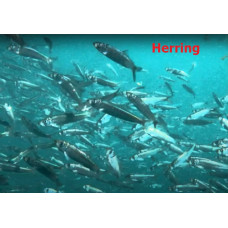Pelagic fishes - ecological group of fishes inhabiting surface layers and water column (pelagial). They feed on plankton and nekton (pikeperch, herring, tugun, spruce, etc.) They are divided into peaceful (herbivorous, planktonophagous, benthosophagous, detritophagous) and predatory fish.
Pelagic organisms (plankton and nekton - a set of aquatic animals capable of independent, active movement for considerable distances in open parts of the water body) live in Pelagial. Higher plants do not grow in the pelagial due to unfavorable lighting conditions near the bottom.
Marine pelagic waters are the largest water area on Earth, with an estimated volume of 1,370 million cubic kilometers. It provides habitat for more than 11% of currently known fish species. The average depth of the oceans is 4000 meters. Over 98% of the water volume is deeper than 100 meters and over 75% is deeper than 1000 meters.
Marine finfish can be divided into oceanic and coastal fishes. Coastal fish inhabit shallow waters above the continental shelf where sunlight penetrates. Oceanic fish inhabit deeper and more extensive waters beyond the continental shelf, although they sometimes swim into the coastal zone.
Pelagic fish range in size from small forage fish, such as herring and sardines, to large predators that occupy the top of the food pyramid, such as tuna and oceanic sharks.
As a rule, pelagic fish are excellent swimmers, they glide rapidly in dense layers of water. Many have spindle or torpedo-shaped bodies that allow them to develop high speed in the water and cover long distances. Sailfish can reach speeds of up to 109 km/h, and some species of tuna can cross the Pacific Ocean. Many pelagic fish form giant schools weighing over a thousand tons. Others, like the moonfish, whose mass reaches 2 tons, lead solitary lives.
Pelagic fish have dense bodies and negative buoyancy. Almost all species, with few exceptions, have a swim bladder filled with a low-density gas mixture. Thanks to the bubble, the body of pelagic fish acquire neutral or positive buoyancy. In the world's oceans fish with a swim bladder are found at depths up to 7000 meters. In finfish, the swim bladder also performs a hydrostatic function.
Pelagic fishes
Tags: pelagic fishes


